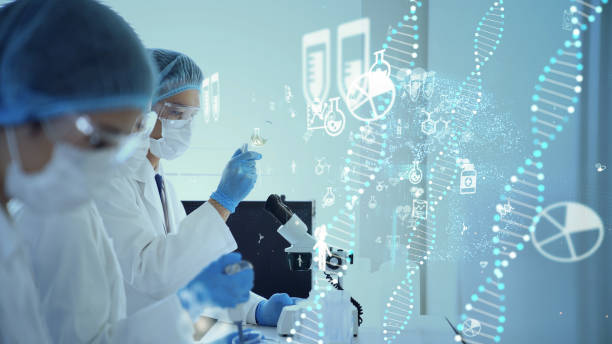Introduction
Cell science, the investigation of cells and their perplexing capabilities, is a foundation of natural sciences. Cells are the fundamental units of life, making up each creature on The planet, from the least difficult microscopic organisms to the most mind boggling plants and creatures. Understanding how cells work is urgent for some fields, including medication, hereditary qualities, and natural chemistry. In this article, we’ll dive into the entrancing universe of cell science, investigating the designs and cycles that characterize life at the cell level. As we explore through this excursion, we’ll likewise feature Instructing Techniques that can assist with making these ideas more open to students, everything being equal.
The Construction of Cells

Cells come in different shapes and sizes, however they all offer normal designs that are imperative for their capability. The cell film, core, and cytoplasm are the essential parts of a cell. The cell film goes about as a defensive obstruction, controlling what enters and leaves the cell. The core, frequently alluded to as the control place, houses the cell’s hereditary material, DNA. The cytoplasm is a jam like substance where most cell exercises happen. Showing Techniques for presenting these designs incorporate utilizing models, outlines, and intuitive exercises to help understudies picture and grasp these fundamental parts.
The Job of DNA
DNA, or deoxyribonucleic corrosive, is the diagram of life. It contains the directions required for an organic entity to create, make due, and repeat. Inside the core of each and every cell, DNA is coordinated into chromosomes. Every chromosome is comprised of qualities, which are explicit groupings of DNA that code for proteins. Proteins are the workhorses of the cell, playing out a great many capabilities that keep the cell and living being alive. Consolidating Showing Methodologies, for example, hereditary reproductions and DNA extraction trials can make the idea of DNA more substantial for understudies.
Cell Cycles: Digestion
Digestion is the arrangement of life-supporting synthetic responses inside cells. These cycles are fundamental for changing over supplements into energy, building cell structures, and disposing of byproducts. Digestion is separated into two classes: catabolism, the breakdown of atoms to create energy, and anabolism, the combination of perplexing particles from less difficult ones. Instructing Procedures that include genuine models, for example, contrasting digestion with a plant’s sequential construction system, can assist understudies with getting a handle on the significance of these cycles in regular day to day existence.
Cell Division and Development
Cell division is an essential interaction by which a solitary cell separates into two girl cells. This cycle is pivotal for development, improvement, and tissue fix in multicellular creatures. There are two kinds of cell division: mitosis, which happens in substantial cells, and meiosis, which happens in regenerative cells. Showing Procedures like time-pass recordings and intelligent livelinesss can really exhibit the phases of cell division, making it simpler for understudies to grasp this mind boggling process.
Cell Correspondence

Cells speak with one another through a cycle known as cell flagging. This correspondence is indispensable for planning different capabilities inside a living being, for example, answering ecological changes or controlling development and improvement. Cell flagging includes the transmission of signs starting with one cell then onto the next, frequently through compound couriers like chemicals. Instructing Systems that incorporate pretending exercises, where understudies showcase the jobs of various cell parts, can make the idea of cell correspondence seriously captivating and noteworthy.
The Significance of Foundational microorganisms
Foundational microorganisms are special cells with the capacity to form into various cell types. They assume a basic part in development, improvement, and tissue fix. There are two primary sorts of undifferentiated organisms: undeveloped immature microorganisms, which can turn out to be any cell type in the body, and grown-up undifferentiated cells, which are more restricted in their true capacity. Showing Methodologies, for example, contextual analyses on foundational microorganism research and its applications in medication can assist understudies with valuing the capability of these astounding cells in regenerative medication and treatment.
Cell Breath and Energy Creation
Cell breath is the cycle by which cells convert glucose and oxygen into energy, water, and carbon dioxide. This energy is put away as ATP (adenosine triphosphate), which powers different cell exercises. Cell breath happens in the mitochondria, frequently alluded to as the force to be reckoned with of the cell. Instructing Systems that include tests, such as estimating the pace of breath in various living beings, can give active experience and develop’s comprehension understudies might interpret how cells create energy.
The Job of Organelles
Organelles are particular designs inside cells that carry out unmistakable roles. A portion of the key organelles incorporate the mitochondria, the endoplasmic reticulum, the Golgi device, and lysosomes. Every organelle plays a particular part, from creating energy to handling and moving proteins. Instructing Systems that utilization relationships, like contrasting organelles with various divisions in a manufacturing plant, can help understudies connect with and figure out the elements of these phone structures.
The Fate of Cell Science

The field of cell science is quickly progressing, with new disclosures being made consistently. From understanding the components of illnesses to growing new treatments, cell science is at the very front of logical exploration. The utilization of state of the art advances like CRISPR quality altering and high level imaging strategies is opening up additional opportunities in the investigation of cells. Instructing Techniques that consolidate conversations on the most recent exploration and mechanical headways can move understudies to seek after vocations in this thrilling and steadily developing field.
Final words
Cell science is a captivating and fundamental area of science that gives a more profound comprehension of life at its generally key level. By investigating the designs, cycles, and developments inside cell science, we can see the value in the intricacy and excellence of living life forms. Instructors can utilize Training Methodologies to make these ideas open and connecting with, encouraging another age of researchers and informed people who are interested about their general surroundings.
